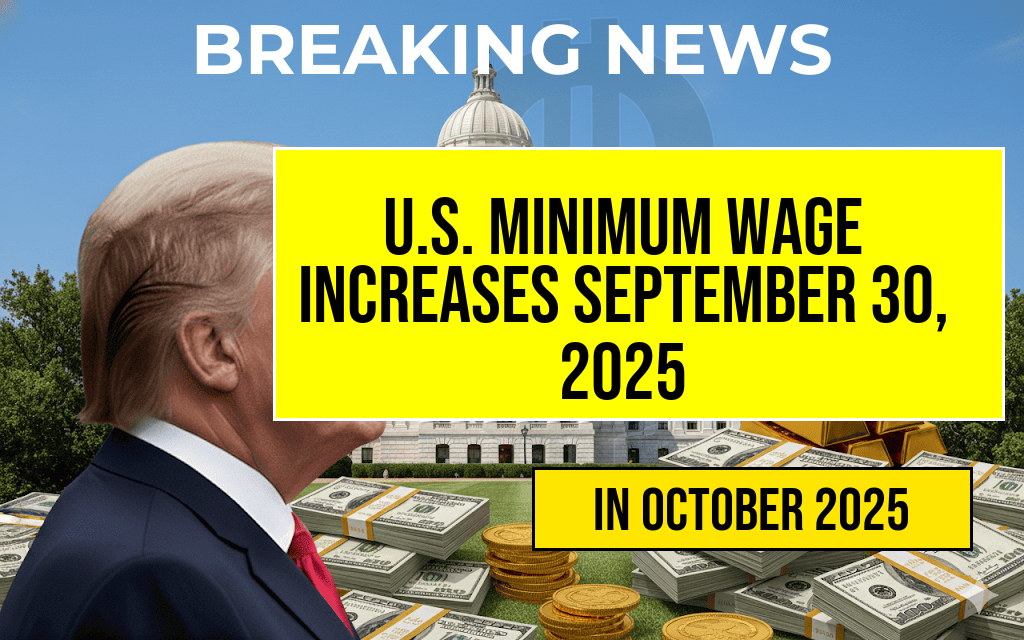On September 30, 2025, the federal minimum wage in the United States will see a significant increase as part of a phased approach to enhance wage standards for workers across the country. This adjustment comes in response to ongoing discussions about economic equity, living costs, and the financial well-being of low-income families. The new federal minimum wage will rise to $15 per hour, a move anticipated to affect millions of American workers. This decision has been met with a mix of support and criticism, reflecting the diverse perspectives on the impact of wage increases on businesses and the economy at large. As the date approaches, employers and employees alike are preparing for the changes that will come with this new wage standard.
Impact of the Minimum Wage Increase
The increase to $15 per hour is expected to have far-reaching implications. Proponents argue that raising the minimum wage is essential for lifting families out of poverty and boosting consumer spending. According to a report from Forbes, increasing the minimum wage can also lead to reduced employee turnover and increased productivity, as workers feel more valued and secure in their positions.
However, opponents caution that this substantial wage hike may place a financial strain on small businesses, potentially leading to job losses or increased prices for consumers. The debate continues as various stakeholders examine the balance between fair wages and economic sustainability.
State-by-State Breakdown of Minimum Wage Rates
As the new federal minimum wage approaches, various states and localities have already set their own minimum wage rates, often exceeding the federal standard. Below is a comprehensive list of current minimum wage rates across the United States:
| State | Current Minimum Wage |
|---|---|
| California | $15.00 |
| New York | $15.00 |
| Washington | $15.74 |
| Massachusetts | $15.00 |
| Florida | $11.00 |
| Texas | $7.25 |
| Ohio | $9.30 |
| Illinois | $13.00 |
Future Adjustments and Considerations
The federal increase set for 2025 is part of a broader trend towards reevaluating wage standards in response to inflation and the rising cost of living. Experts predict that as inflation continues to affect everyday expenses, further adjustments to the minimum wage may be necessary. Many advocates for workers’ rights are calling for automatic adjustments tied to inflation rates to ensure that wages keep pace with the cost of living over time.
Looking Ahead
As the September 30, 2025 deadline approaches, discussions surrounding the minimum wage will likely intensify. Employers are encouraged to prepare for this change by assessing their current wage structures, while workers are urged to stay informed about their rights and the implications of the new wage laws. The upcoming increase represents not just a financial adjustment, but a pivotal moment in the ongoing dialogue about economic justice and the rights of workers in the United States.
For more information about minimum wage policies and their implications, visit Wikipedia for a detailed overview and analysis.
Frequently Asked Questions
When will the U.S. minimum wage increase take effect?
The U.S. minimum wage is set to rise on September 30, 2025.
What will the new minimum wage rate be?
The new minimum wage rate will be determined based on the latest adjustments and will be included in the complete list of hourly wages available in the article.
How often does the minimum wage change in the U.S.?
The minimum wage in the U.S. can change based on federal, state, or local laws, but typically it is reviewed and adjusted every few years to account for inflation and cost of living increases.
Are there different minimum wage rates by state?
Yes, many states have their own minimum wage laws, which can be higher than the federal minimum wage, resulting in a variety of hourly wages across the country.
Where can I find the complete list of hourly wages?
The complete list of hourly wages can be found in the article, which provides detailed information about the minimum wage rates for different states and localities.

Leave a Reply